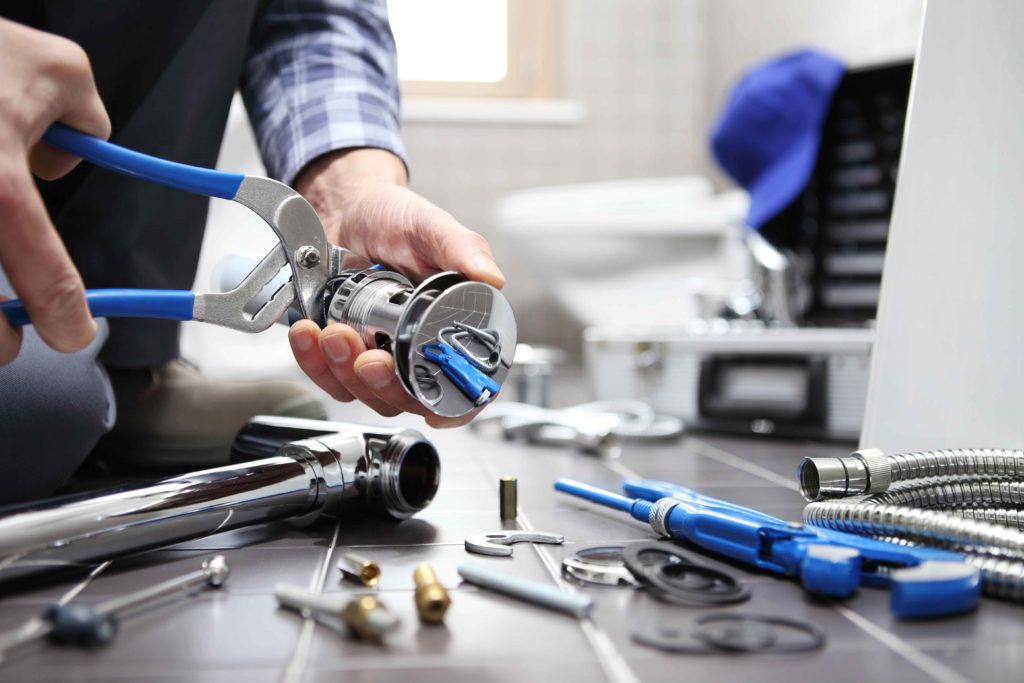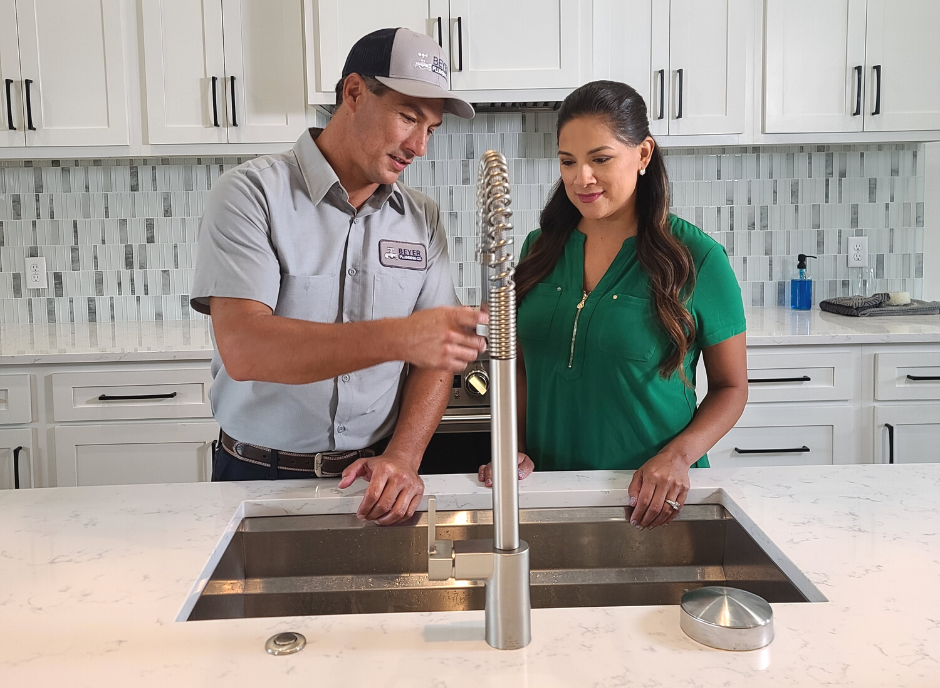How It's Mandatory to Repair a Dripping Faucet
How It's Mandatory to Repair a Dripping Faucet
Blog Article
What are your ideas regarding 4 Common Reasons for a Leaky Faucet?

Dripping taps may appear like a minor hassle, but their impact goes beyond simply the aggravation of the audio. From drainage to sustaining unnecessary financial prices and health dangers, disregarding a leaking tap can bring about different consequences. In this write-up, we'll explore why it's essential to resolve this common house problem without delay and efficiently.
Waste of Water
Ecological Impact
Trickling faucets contribute substantially to water wastage. According to the Environmental Protection Agency (EPA), a solitary faucet dripping at one drip per second can waste more than 3,000 gallons of water each year. This not just stress water sources however also influences environments and wild animals dependent on them.
Step-by-Step Overview to Taking Care Of a Dripping Faucet
Devices Called for
Before trying to repair a dripping tap, collect the required devices, consisting of an adjustable wrench, screwdrivers, replacement parts (such as washers or cartridges), and plumber's tape.
Typical Tap Issues and Their Solutions
Identify the sort of tap and the details issue creating the drip. Usual problems consist of damaged washers, corroded valve seats, or faulty O-rings. Refer to supplier instructions or online tutorials for step-by-step support on repair services.
Financial Costs
Boosted Water Bills
Past the environmental effect, trickling taps can inflate water expenses significantly. The collected waste gradually converts into greater utility expenses, which might have been prevented with timely fixings.
Potential Residential Or Commercial Property Damages
Moreover, prolonged leaking can lead to harm to fixtures and surface areas bordering the tap. Water buildup can trigger discoloration, deterioration, and also architectural issues if left unattended, resulting in added repair costs.
Health Issues
Mold and Mold Growth
The continuous presence of moisture from a trickling tap develops an excellent atmosphere for mold and mold growth. These fungi not just endanger indoor air top quality however additionally position wellness risks, specifically for people with respiratory conditions or allergic reactions.
Waterborne Diseases
Stagnant water in leaking taps can become a breeding place for microorganisms and other microorganisms, enhancing the risk of waterborne diseases. Impurities such as Legionella microorganisms thrive in stagnant water, potentially resulting in major health problems when consumed or breathed in.
Do it yourself vs. Specialist Fixing
Pros and Cons of DIY Repair
While some might try to fix a trickling tap themselves, DIY repairs come with their very own set of challenges. Without proper knowledge and tools, do it yourself attempts can exacerbate the concern or result in insufficient repairs, extending the problem.
Advantages of Hiring a Specialist Plumber
Hiring a specialist plumber makes sure that the underlying cause of the leaking tap is addressed effectively. Plumbings have the competence and equipment to identify and fix tap issues efficiently, saving time and lessening the threat of more damage.
Ecological Obligation
Individual Contribution to Preservation
Taking responsibility for dealing with dripping taps lines up with more comprehensive efforts towards water conservation and environmental sustainability. Every person's actions jointly make a considerable impact on maintaining precious sources.
Sustainable Living Practices
By focusing on punctual repair work and adopting water-saving habits, individuals add to lasting living practices that benefit both existing and future generations.
Safety nets
Normal Maintenance Tips
To avoid dripping faucets, perform routine maintenance such as cleansing aerators, checking for leakages, and replacing damaged components promptly. Additionally, consider installing water-saving gadgets or updating to much more effective fixtures.
Value of Prompt Repair Works
Addressing trickling faucets as soon as they're discovered stops further water wastefulness and prospective damages, inevitably saving both water and money over time.
Impact on Residential Or Commercial Property Worth
Assumption of Well-Maintained Residential Property
Preserving a building in good condition, consisting of resolving upkeep issues like leaking faucets, boosts its viewed value and worth among potential purchasers or renters.
Impact on Resale Value
Residences with properly maintained plumbing fixtures, consisting of taps, command higher resale worths in the realty market. Addressing dripping taps can contribute to a favorable perception throughout home evaluations and negotiations.
Final thought
Attending to a leaking faucet exceeds mere comfort; it's a crucial action towards conserving water, minimizing economic expenses, and guarding wellness and residential property. Whether with do it yourself repair services or specialist support, taking action to repair dripping taps is a little yet impactful means to advertise accountable stewardship of sources and contribute to a healthier, a lot more lasting future.
How to Fix a Dripping or Leaky Faucet
A leaking faucet is one of the most common problems that homeowners encounter, but it being commonplace doesn’t make it any less annoying. The constant drip drip drip of a leaking bathtub faucet, showerhead, or sink tap can disturb your home’s serenity. Left neglected, a dripping faucet can also result in higher water bills and discoloration or mold growth in your sink or plumbing fixtures.
Fortunately, you don’t have to be a trained plumber to know how to stop a dripping faucet. With some basic tools, replacement parts, and a little patience, leaky faucet repair is a breeze. In this article, we’ll explain what causes dripping faucets and how you can fix them.
What Causes a Leaking Faucet?
Kitchen and bathroom faucets come in all manner of designs, but most involve some combination of valves, O-rings, seals, and washers. The O-ring is usually the weakest link, but any one of these pieces can wear down over time. Heat, moisture, temperature fluctuations, minerals, mold, and movement can contribute to warping and corrosion, breaking the watertight seal. This just comes with the territory of being a homeowner. Everything is always subject to wear and tear, and some component parts of your appliances and fixtures need to be replaced on occasion. At least replacement O-rings are cheap!
More rarely, dripping faucets can be a symptom of excessively high water pressure. Were this the case in your home, you would probably notice that the leak is not isolated to one faucet. Water pressure issues are harder to resolve on your own. We recommend contacting a professional plumber if you suspect your water pressure is too high.
How to Fix a Dripping Faucet
Pipe wrench or monkey wrench Allen wrench set Screwdrivers Old towel or rag Shut off the water.
Before you do anything, you need to turn off the water to keep from drenching your kitchen or bathroom. You should find a valve under the sink and against the wall. Once you’ve turned this valve, try turning the faucet on to confirm that the water source has been cut off.
If you can’t locate your local valve for the faucet you’re working on, you can always shut off the water to the house at the main valve. Of course, this will prohibit anyone from using the sinks, showers, or toilets while you’re working on the faucet that’s giving you trouble.
Plug or block the drain.
You’ll be disassembling the faucet and removing some small bits of hardware. Plug the drain with a stopper or rag to avoid the possibility of a small screw falling into your P-trap.
Take apart the faucet assembly.
There are several varieties of kitchen and bathroom faucets, each with its own manner of assembly. For detailed instructions on how to disassemble your faucet, you can refer to the fixture’s manual or contact the manufacturer. If you know whether you have a ball, disc, cartridge, or compression faucet, you can find detailed schematics online.
In general, you need to begin by removing the faucet handles. You might notice a small screw that you’ll need to remove with a screwdriver or Allen wrench. If you don’t see any visible securing hardware, it’s likely hidden under a decorative cap that can be unscrewed or popped off with flathead screwdriver.
Remove each piece methodically, consulting a schematic when necessary. Take notes or arrange the pieces in such a way to make it easier to correctly reassemble the faucet later.
Remove the cartridge.
Once you’ve removed the handles and securing hardware, you should be able to remove the valve cartridge or stem. Some cartridges will slide right out. Other faucet models will require you to loosen a nut with a pipe wrench before you can remove the valve stem.
Examine the exposed hardware.
With the cartridge or stem removed, inspect the component parts. Check the rubber O-rings for wear and tear. Also examine the seat washer for corrosion or other damage. These pieces are usually the responsible parties for a dripping faucet, but it’s worth inspecting the other component parts while you have the faucet disassembled.
Find replacement parts.
Once you’ve identified which faucet component has failed, find an identical replacement. Your local hardware store should have O-rings, seat washers, and other standard components in stock. If you have a luxury or uncommon faucet, you may have to contact the manufacturer for a replacement part.
It’s a good idea to take your old parts with you to the hardware store so you can compare them with the store’s inventory and be sure you’re purchasing the correct replacement.
Reassemble the faucet.
With your new parts in hand, reconstruct the faucet and handles. Don’t be tempted to overtighten screws or nuts. You might think this could create a better seal, but it can instead damage or bend a delicate part of the assembly and create a new problem for you.
Turn on the water and test the faucet.
The only thing left to do is test your work. Unplug the sink, turn the water back on, and try the faucet. Congratulate yourself on a job well done!
https://www.libertyhomeguard.com/how-to-fix-a-dripping-or-leaky-faucet/

We had been made aware of that write-up about Why Are My Faucets Dripping (And Can I Fix It Myself)? through a pal on our other web page. Loved our blog posting? Please share it. Help others discover it. Thank you so much for taking the time to read it.
Report this page